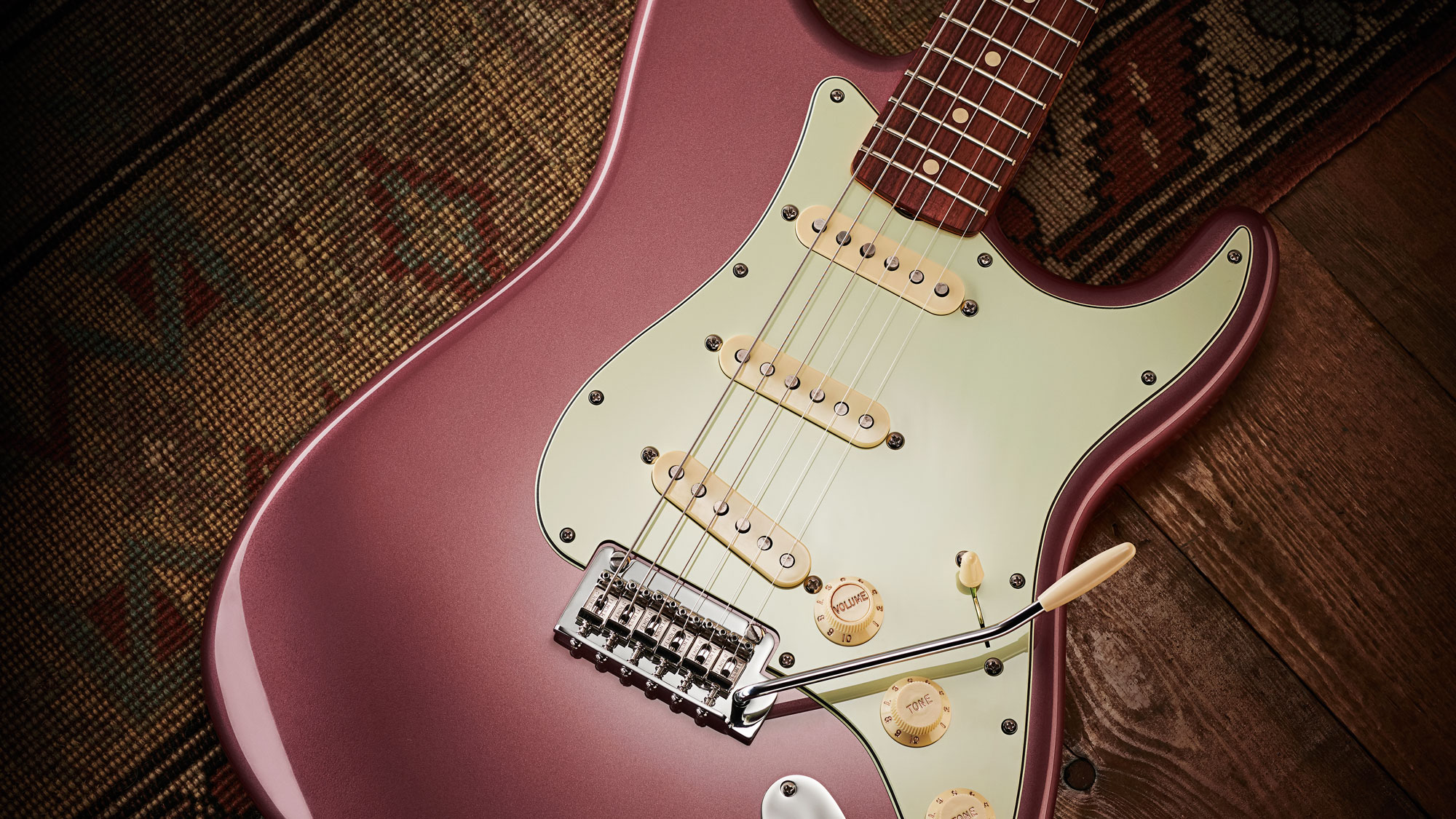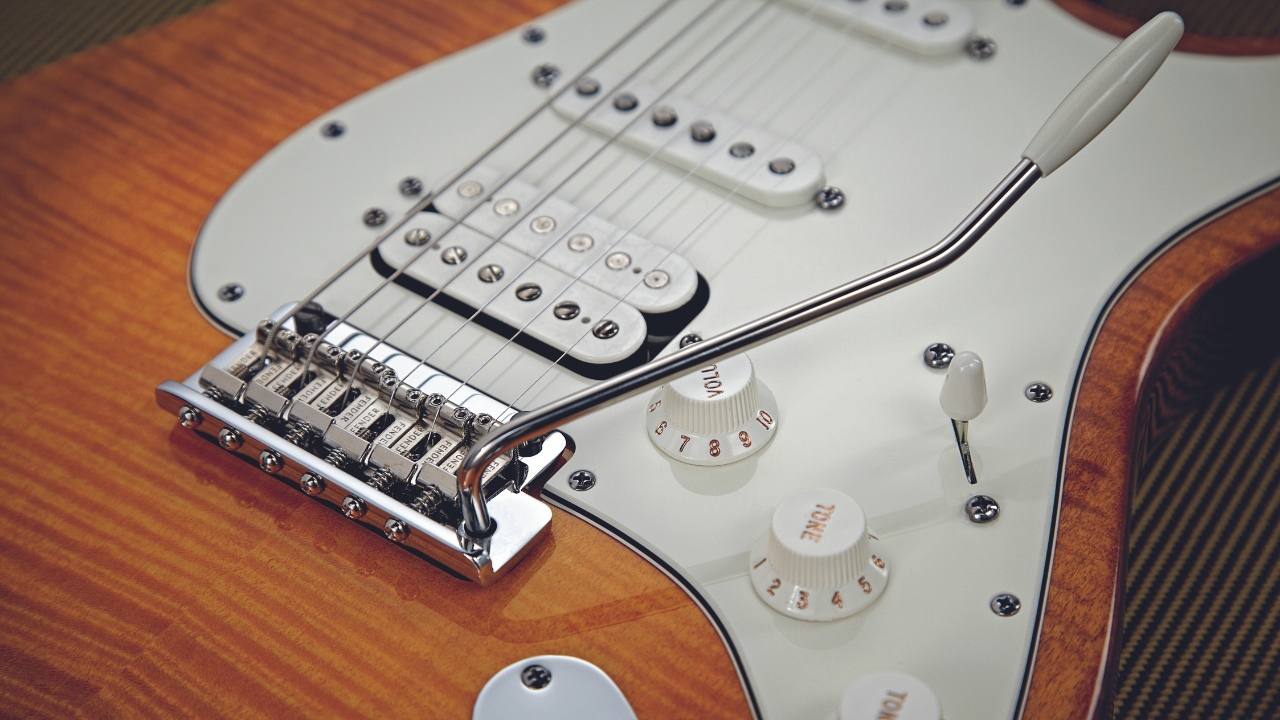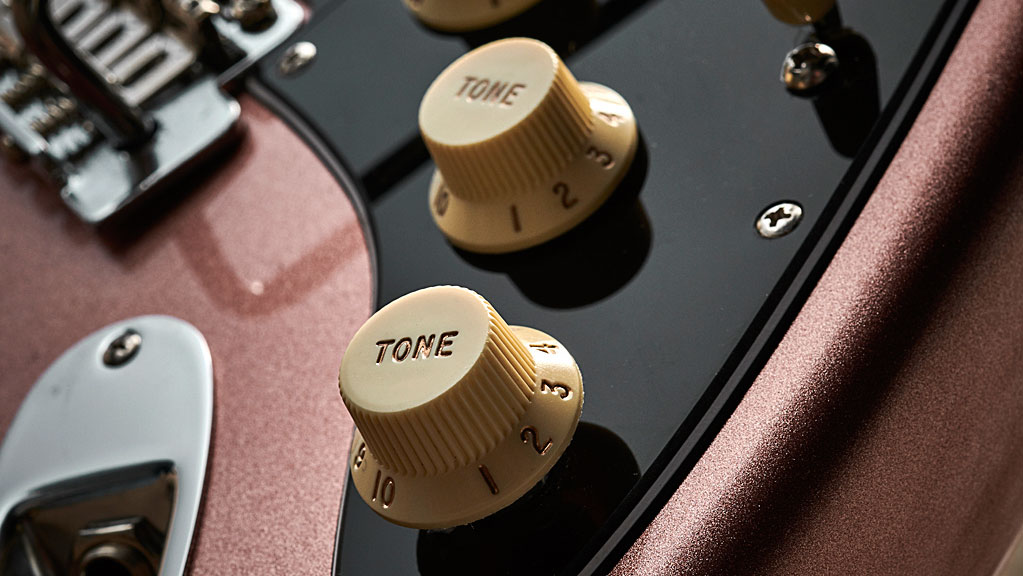
It’s often said that Leo Fender got it right the first time with the Stratocaster design.
Whether or not you agree with that sentiment, one thing we will argue until our faces turn a delicate shade of Daphne Blue is that the Strat’s modular nature makes it tremendously appealing to vast numbers of guitarists – and with so many models there’s almost certain to be a Strat to suit your requirements.
But which one is right for you? With so many options it’s not an easy choice.
Here, we break down key Strat specs. We’ll consider choices of bodies, necks, tone controls, hardware and more to help you choose your next Strat, though, for the sake of brevity, rarity, and all of our wallets, we’ll rule out the Custom Shop here.
For now, we’ll kick off with one of the biggest deciding factors with any electric guitar: the pickups…
Pickups

Things get complicated quickly with Strat pickups as many are custom voiced for each range of guitars. Happily, that means you’ll have a good idea of each pickup’s character.
On the downside, it means the best advice we can give you is to make sure you try out any guitar or pickup you’re interested in. On that bombshell, here are the main categories of pickup you’ll need to consider.
1. Era-specific
Many Fender pickups are era-related. The mid-priced Vintera II ’50s Strat features pickups voiced to be “more ’50s-accurate”, and it’ll set you back $1,149/£909. American Vintage II Strats start at $2,299/£1,999, but their Pure Vintage single coils (in ‘57, ‘61 or ‘73 spec) can be bought as standalone sets starting at $199/£149 if you fancy modifying your own Strat.
2. Noiseless pickups
If you love the tone but hate the hum of single-coil pickups then you have to go Noiseless – and Fender offer them in Vintage and Hot versions, both in either standard or Ultra Noiseless spec. An SSS Player Plus Strat will set you back $999/£939, or the H.E.R. signature Strat comes in at $1,349/£1,249.

3. HSS configuration
You’ll find HSS-configured Strats at every price range, from the affordable Squier Sonic and Contemporary models up to this year’s flagship 70th Anniversary American Ultra. Check out the Player Series, too, which strikes a balance of price and performance.
4. Artist specs
Browse the Artist Series of Strats for some eclectic takes on pickup configuration. Tom Morello’s Soul Power model pairs two Noiseless single coils with a Seymour Duncan Hot Rails humbucker. There’s a Fernandes Sustainer and a Duncan JB JR humbucker in Ed O’Brien’s Strat. For contemporary metal tones, Jim Root’s signature axe features a duo of active EMG 81 and 60 pups.
5. Pre-wired pickguards
If you’d rather choose your own pickups, Fender offer various pre-wired pickguards to fit your Strat. However, it’s also worth looking farther afield. Bare Knuckle offer an extensive range of pickups which they can provide in pre-wired guards.
Tone controls

Three pickups. Three knobs. You’d think the Strat’s tone controls would be simple, right? Not so. The standard feature set on an SSS Strat is a master volume, a tone knob each for neck and middle pickups, but no tone control at the bridge – plus a five-way selector switch.
However, there are variations on this core spec to look out for, and these are the most important to consider…
1. The S-1 switch
A gem in Fender’s Strat lineup, S-1 switching offers five additional pickup wirings over and above those from a standard five-way selector switch.
In position one on an SSS Strat, typically only the bridge pickup is engaged. Press the S-1 switch (a push button mounted in a volume/tone knob) and it could be wired so that all three pickups are heard in series.
There’s a wealth of possible permutations (and it’s not the same on every S-1-equipped Strat) – just think of it as a tonal expansion for the guitar.
2. Bridge tone control
If having no tone control on your bridge pickup is a deal-breaker, check out the Player series which offers this facility. It’s also a simple wiring mod for you or your local guitar tech to perform on your Strat.

3. Push me pull me
If you like your Strats in HSS configuration, keep an eye out for a push/pull switch on those bridge ’buckers, giving you single-coil-esque tones. The American Performer HSS ($1,449/£1,379) features this coil-split function.
4. Pre-wired pickguards (again!)
High-end electronics come mainly with Fender’s high-priced Strats, but a fully wired pickguard can deliver awesome tone at relatively affordable prices, assuming you’re modding a guitar you already own.
We’d urge you to budget for premium potentiometers, wiring and capacitors. Check out Bourns and CTS pots and Sprague caps.
Necks

Arguably the most important part of any guitar is its neck, and while most chatter tends to focus on materials and the eternal maple vs. rosewood/rosewood substitute debate, we’d suggest that the shape is a more important consideration.
It’ll certainly have a bigger effect on your playing than the wood it’s built with, and that’s what we’re focusing on here.
1. Neck profile
The profile is the shape of the rear of the neck – and it plays a big part in how comfy your fretting hand will feel when you play.
You can search guitars on Fender.com based on four profiles: C, D, U and V, and this isn’t some random code; the shape of each letter is roughly akin to the curve of the neck. C is a fairly neutral round curve, V has a slight “hump” in the middle with flatter sides. You get the idea.
However, it’s only a guide. For example, some Vs are quite pronounced, whereas others are softer, and so on. You’ll learn your preference once you’ve tried a few guitars out.
2. Fretboard radius
Radius refers to the roundness/flatness of the fretboard. A low figure (say, 7.25” as found on the Vintera II '50s) is rounder, generally considered more “vintage”, and, some say, is more comfy for cowboy chords.
A higher figure (over 12” – see the Squier Contemporary Strat) is flatter and supposedly better suited to shreddier styles. 9.5” is a happy medium.
Like neck profile, it’s not a price-dependent feature – so think about your playing style when choosing any guitar.
3. Frets
Expect 21 or 22 frets on a Strat. Why not 24? Because those two extra frets would interfere with the position of the neck pickup, which is strategically located to, er, pick up a strong harmonic, enhancing the tone thusly.
Like radius and profile, fret size isn’t related to price, so, for example, a $429/£375 Squier Classic Vibe ’50s model has “narrow tall” frets and the similarly priced Contemporary Special features the jumbo kind. Supposedly jumbos can enhance speedy playing, but it really is down to personal preference.
Hardware

The Strat is the supreme modding platform, and there’s a whole industry of aftermarket hardware mods and upgrades to draw on.
Of course, there are also 100+ Fenders and Squiers to look at first, and you may well find your dream axe there.
1. Tremolos
Fender’s vintage-style six-screw trem can be considered a de facto “standard” choice, but there are alternatives.
The mid-price Player and Player Pro Strats come with a two-point trem that’s better suited to more vigorous use than the vintage style. In fact, there are dozens of two-point trems and price is no determining factor – the Affinity Strat (just $249/£225) also includes this feature.
The Squier Contemporary FR and Dave Murray signature both feature Floyd Rose locking trems for when you’ve just got to divebomb! And, though it ain’t cheap, the Michael Landau signature features a vintage-style six-point trem, but with a rout behind it to allow for upward whammy bar moves.
2. Fixed bridges
Tremolos not your thing? No worries – there are several fixed bridge Strats. Squier’s Paranormal Strat-O-Sonic features a compensated wraparound style bridge – dare we say it’s a little bit Gibson-esque.
The Robert Cray, Tom DeLonge and Jim Root Strats all feature a hardtail bridge with through-body stringing, the latter two also having block saddles.
If you’re on the tightest budget, check out the Squier Sonic HT at just $199/£155.
3. Nuts and tuners
It’s best to consider nuts and tuners as upgradeable parts – there are far too many choices on Fender’s menu to make them a deciding factor. We love Graph Tech TUSQ products, which are a great upgrade to many stock nuts.
Check out brands like Schaller and Gotoh for replacement tuners and opt for locking units for ultimate tuning stability. We’d recommend getting tuners and nuts installed by a qualified guitar tech to get the best out your pride and joy.







